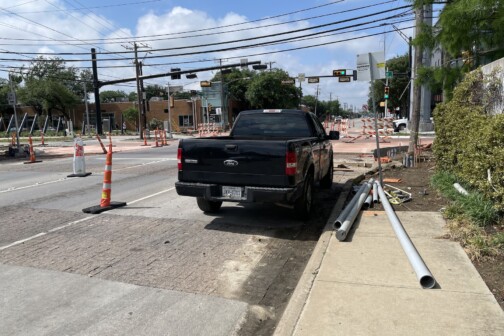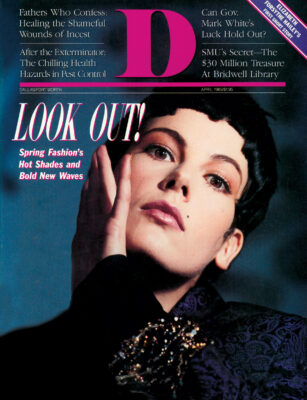Classical music radio stations appeal to such a small segment of the population that when a station’s announcers are mediocre, its records outdated and its broadcasting signal weak, it’s no wonder that the station has a difficult time surviving in a competitive radio market.
Frankly, that description accurately defined the musical menu that the strictly classical music station WRR (101.1 FM) offered its listeners for most of its 38-year history. But in the past year and a half, the city-owned station has made a turnaround, and much of the credit goes to the new station director, Maurice Loewenthal.
Loewenthal was hired away from WTMI, a highly successful classical music radio station in Miami, by Dallas city officials in the hope that his experience there would rub off on WRR. That was just after the city abandoned its plans to sell the seriously ailing station.
Loewenthal says that in the year since the station was given a second chance, commercial sales have increased by one-third, the announcing staff has been replaced, new equipment has been installed, funds have been approved for a new signal transmitter, and a satellite link connecting the station to classical music stations in 15 other cities has been activated. Within a few months, WRR will increase the distance its 100,000-watt signal travels from its location in Fair Park from about 65 miles to 102 miles.
Along with these nuts-and-bolts improvements, Loewenthal says, programs by local art/music/dance critics such as John Ardoin and Lawson Taitte have been added to the WRR format in an effort to give the station a more personal appeal.
Another way WRR is trying to attract listeners is by giving them the opportunity to conduct their own classical music program through a contest co-sponsored by The Dallas Downtown News.
In addition, WRR has joined most of the other local stations in giving live traffic reports and is the only station in Dallas that carries The Wall Street Journal Report and Barron’s Report.
Loewenthal says that WRR’s 3 percent share of the listener market is typical for classical music stations across the country. “It looks really low compared to other radio stations,” he says, “but it reflects our kind of listener.”
Ed Wodka, vice president and general manager of competing all-news station KRLD, agrees. “I spend some time with WRR music, and I enjoy it, but if I listen too long it tends to put me to sleep. It’s not my favorite sort of thing because of my adult contemporary news background, but I think that WRR is a fine addition to the city.” As for WRR’s updated format, Wodka says that WRR can do little to increase its audience share. “When your music appeals to a 1 or 2 share of the audience, it wouldn’t matter if you had Dan Rather live,” he says.
Susan Harmon, station manager of public radio station KERA (90 FM), says that there’s plenty of room in Dallas for a station like WRR. KERA plays classical music as part of its format, but it competes for listener donations, not advertising dollars.
Loewenthal says that one of the strategies he plans to use to attract regular listeners to WRR is to establish the station as Dallas’ “voice of the arts.” Giving coverage to new dance groups or emerging artists would be part of that commitment. A few months ago, he says, the station management discussed with developer Har-lan Crow the possibility of moving WRR to the ground floor of the recently opened LTV Center. The building, whose lobby is filled with such art treasures as Rodin sculptures, anchors the Arts District. But since little more than $1.3 million is allotted for the station’s 1985 budget, a financial decision was made to stay in the large old brick building at Fair Park.
Despite that decision, Loewenthal says, “We want people to say that we are really helping the arts. That will build our credibility.”
Get our weekly recap
Brings new meaning to the phrase Sunday Funday. No spam, ever.
Related Articles

Healthcare
Steward Health Files for Bankruptcy
Steward CEO Dr. Ralph de la Torre blamed government payers and other factors for the financial duress. The system owes top creditors $600 million.
By Will Maddox

Urbanism
Dallas: The City That Hates Pedestrians, Pt. 51
At some point, Hi Line Drive will be an important connecting point between the Katy Trail and the Trinity River. Until construction is finished, maybe just stay in your car.
By Matt Goodman

Shopping & Fashion
‘That’s a Big Ass Candle’
Chloe and Trent Mervine want their ginormous candle to be the only one you need this year.


